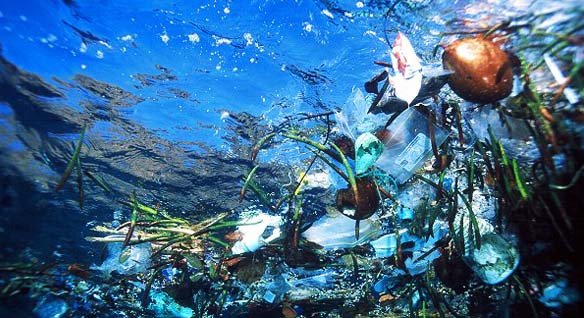
Every piece of plastic ever produced, since it came on the scene in the 1950s, is still with us today. And it isn’t going anywhere.
How abreast are we about what’s happening around the globe? Recently, as I search for related articles for a certain study, I came accross this great pacific garbage patch. Since I consider myself to be an eco-friendly individual, I clicked the link about this particular patch and got shock about what I’ve read and seen.
I got the following information from sustainablebusiness.com written by Bart King and it says “The Great Pacific Garbage Patch contains an estimated 4 million tons of floating plastic waste. A circulation of ocean currents causes trash discarded along the Pacific Rim to gather in this area, known as the North Pacific Gyre.
The most densely polluted area is roughly twice the size of Texas and is alternately called the Eighth Continent, the Plastic Vortex or Garbage Island.
Although floating plastic bags, bottles and foam can be seen in every direction, it’s the plastic that has broken down into much smaller pieces that is the greatest cause for concern. Plastic does not biodegrade into raw minerals that can be reused by microorganisms. Rather, it photodegrades, as sunlight causes it to become brittle and break into ever smaller pieces.
Eventually these tiny pieces resemble plankton, the primary organism on the marine food chain. Researchers say random water samplings taken from the Garbage Patch contain hundreds or even thousands of plastic pieces for each actual plankton. These pieces, which don’t exactly float or sink, are suspended in the top 30 meters of water, according to reports. One researcher said the underwater scene is like being inside an enormous snow globe.
Strangely enough, this soupy mess of plastic was only discovered ten years ago and studies are just beginning to evaluate its impact on the ecosystem. Early estimates suggest that on average, for every single plankton in the earth’s oceans, there are six similarly sized bits of plastic. Each speck of plastic serves as a collection point for what are called persistent organic pollutants–chemical toxins like DDT and other pesticides that are already prevalent in the ocean and cling to the plastic. As a result, it’s not just the plastic itself that enters the food supply.”
Meanwhile, here is the video about this alarming great pacific garbage patch.
Somehow, us Batanguenos contribute to this great garbage patch since we are just near the pacific. I am indeed alarmed because here in our town in Mataasnakahoy, we are now experiencing some difficulties on where to dump our garbage. I think, its been months since garbage collectors last collected plastics of waste from Makeans’ (People of Mataasnakahoy) houses. I don’t know if there were problems about dumpsites or they are planning for a sanitation field. But the sure thing is, local folks now are burning their garbage or dumping their garbage in prohibited areas, actions which are harmful to our environment.
I hope we’ll learn to become responsible steward of the earth. In simple ways, let us help save our environment which we only borrowed from the up coming generations.
 WOWBatangas.com Your Source of Great News and Stories from the Province of Batangas, Philippines
WOWBatangas.com Your Source of Great News and Stories from the Province of Batangas, Philippines



